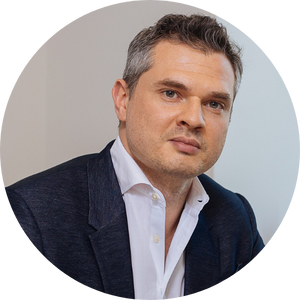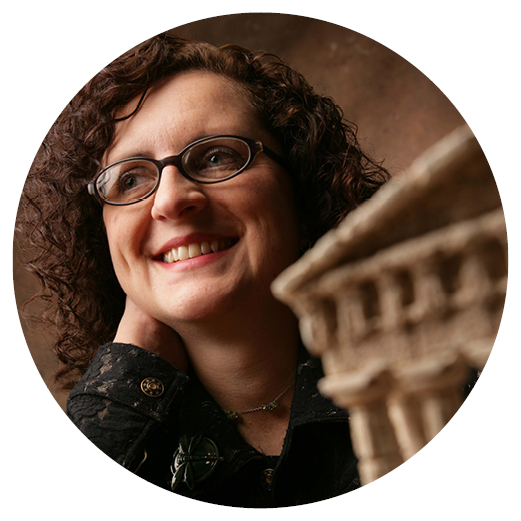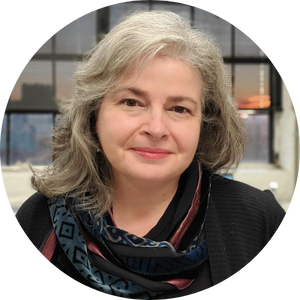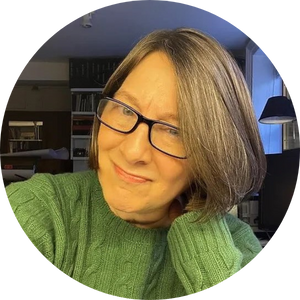
Registration is now closed.
Thank you to all our presenters and attendees of this year’s online
Tri-State Small Firm Symposium!
With nearly 120 people registered, this 9-session virtual conference over 4 dates proved to be fun and informative. Attendees engaged the speakers with great questions, and the presentations were inspiring. Small Firm practitioners explored how to build a distinctive design culture, elevate visibility through media and branding, manage specialized project types, and strengthen their role in the community.
Special thanks to this year’s volunteer and staff planning group:
AIA New York State
Andrea Fisk, AIA
Sarah Drake, AIA
Jeff Pawlowski, AIA
Peter Koniuto
AIA New Jersey
Ruchi Dhar, AIA
Sloan Springer, AIA
Joshua Zinder, AIA
Christina Goldstein
AIA Pennsylvania
Lee Calisti, AIA
Lisa Walzer, AIA
Susan Frear
And to ALL who made this exciting event possible, we say THANK YOU!
Strategies, Stories, and Skills to Power Your Practice

The 2025 Tri-State Small Firm Symposium, hosted by AIA New Jersey, AIA New York State, and AIA Pennsylvania, brings together architects, design professionals, consultants, and industry leaders to share actionable strategies, inspiring stories, and practical tools for thriving in small firm practice. With keynote speakers and interactive education sessions, you’ll explore how to build a distinctive design culture, elevate visibility through media and branding, manage specialized project types, and strengthen your role in the community.
Whether you’re looking to refine operations, expand your network, or adapt to new market realities, the Tri-State Small Firm Symposium is designed to address the unique opportunities and challenges of running a small firm—helping you position your practice for enduring success.
Questions? Contact Peter Koniuto, AIANYS Director of Professional Development at pkoniuto@aianys.org.
Sessions & Descriptions
11:30 AM – 12:30 PM Keynote: Big Idea, Small Project: Cultivating Excellence in Small Firm Practice | 1.0 LU/HSW
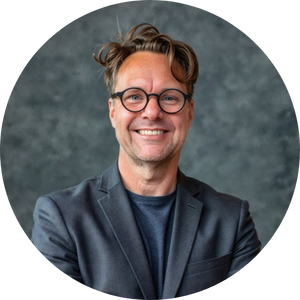
Keynote Speaker:
Bart Shaw, FAIA,
Principal,
Ibanez Shaw Architecture
Bio
SESSION DESCRIPTION
In this keynote, architect Bart Shaw, FAIA, draws from his own nationally recognized practice to share how small firms can build a culture of design that leads to meaningful architecture, enduring recognition, and lasting contribution. Far from theoretical, Shaw’s talk is grounded in the realities of small practice limited resources, lean teams, and complex clients, but points to the power of clarity, consistency, and care in shaping a studio’s creative identity.
▼ Learning Objectives
- Identify strategies for cultivating a design culture that promotes rigorous quality control, ethical responsibility, and thoughtful client engagement within small architectural practices.
- Examine methods for aligning project selection with firm values to ensure that architectural solutions support the health, safety, and welfare of building occupants and surrounding communities.
- Evaluate how design documentation, including photography and narrative, supports transparency, accountability, and broader public understanding of architectural intent and performance.
- Explore how small firms can contribute to the advancement of design excellence through reflective critique, continuing education, and peer benchmarking, thereby elevating professional standards.
- Assess the role of innovation, cultural relevance, and legacy in shaping architectural outcomes that are responsive to physical context, user needs, and long-term environmental impact.
12:45 PM – 2:15 PM: Strategic Visibility for Small Firms: How PR Supports Marketing and Business Development | 1.5 LUs
SESSION DESCRIPTION
A robust marketing strategy is essential for growing your practice and expanding your clientele, but that strategy accelerates with the support of media visibility and professional recognition. This session offers practical tips for leveraging earned media to elevate your firm’s public profile, build a strong presence in trade and business publications, and enhance searchability on the web. Moderated by an architect leading two successful small firms, the panel discussion features architecture and trade journalists, a top PR/marketing consultant, and a New York-based small firm practitioner.
▼ Learning Objectives
- Identify the role of public relations in supporting and amplifying marketing and business development strategies for small architecture firms.
- Explore practical techniques for gaining earned media coverage and increasing visibility in trade and business publications.
- Discuss how to enhance a firm’s online presence and searchability through strategic media exposure.
- Gain insights from PR professionals, journalists, and successful practitioners on building a recognizable and respected firm brand.
11:30 AM – 1:00 PM: Rethinking the Firm: Could AI Be Your Next Practice Partner? | 1.5 LUs
SESSION DESCRIPTION
What if AI could be your most powerful—and only—collaborator? In this session, we’ll explore what AI can achieve in practice, from strategic planning to client engagement and project delivery. Attendees will examine AI’s potential to streamline daily operations, expand creative capabilities, and open doors to new business models. Through real-world examples, we’ll discuss how architects can leverage these tools to work more efficiently, think differently, and position their practices for the future.
▼ Learning Objectives
- Discover how you could position AI within your practice areas to shift and enhance roles, sparking new ideas for integration.
- Envision how AI could transform your daily routine and relationships within your practice, and consider the potential benefits and challenges as you plot your own path forward.
- Map out future skills and strategies your team might need to thrive alongside AI.
- Assess the ethical and social implications of AI in architecture, contemplating how responsible AI use could shape the profession’s impact on communities and client relationships.

Speaker:
Lindsey Rhoden, AIA,
Co-Founder,
Pebble Consultancy
Bio

Speaker:
Thad Rhoden, AIA,
Co-Founder,
Pebble Consultancy
Bio
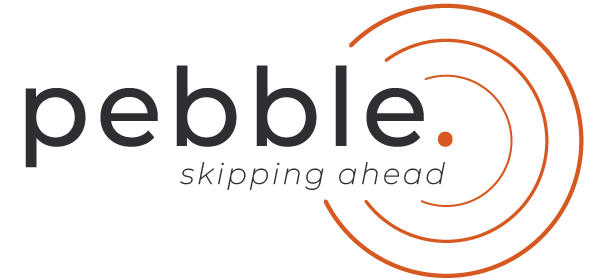
1:15 PM – 2:15 PM: Methodology for Historic Preservation Scoping & Cost Tracking | 1.0 LU

Speaker:
Carlo Zaskorski, AIA,
Owner,
Zaskorski & Associates, Architects
Bio
SESSION DESCRIPTION
This program introduces a preservation-specific cost management framework developed through real-world case studies from small firms. Unlike generic cost estimation courses, it integrates historic preservation nuances—such as sourcing rare materials, addressing structural unknowns, and navigating heritage regulations— into a practical, actionable system. Attendees will gain access to customizable bid form templates and a digital cost-tracking dashboard designed for small firms, leveraging affordable, user-friendly software.
▼ Learning Objectives
- Develop a scope of work for historic preservation projects that incorporate task prioritization, anticipates preservation-specific complexities, and aligns with regulatory requirements.
- Create detailed bid documents—including quantities and unit cost forms—that support accurate contractor pricing and facilitate fair bid comparisons.
- Implement cost tracking tools and workflows tailored to the challenges of historic preservation, including the management of contingencies, unforeseen conditions, and specialty materials.
- Apply a preservation-specific financial management framework to improve project planning, mitigate risk, and maintain budget control throughout construction administration and close-out phases.
11:00 AM – 12:00 PM: How To Win Better Clients Without a Word: Shape Brand Perception | 1.0 LU

Speaker:
Tosin Odugbemi Hoskins, MArch,
Founding Principal,
Atelier Oluwatosin
Bio
SESSION DESCRIPTION
In this session, brand strategist and design consultant Tosin Odugbemi Hoskins shares how firm leaders can shape brand perception—visually, verbally, and experientially—to raise rates, build trust faster, and win better-fit clients. Drawing on lessons from luxury branding and spatial storytelling, we’ll explore how architecture firms can build authority, create resonance, and present their work in a way that signals value before the first conversation.
▼ Learning Objectives
- Identify brand perception gaps that limit client quality, fee potential, and project fit.
- Learn how visual, verbal, and spatial signals influence trust, value, and client decisions.
- Apply brand positioning tactics to elevate your presence across all client touchpoints.
- Design a client journey that increases conversions and enables deeper, more creative work.
12:15 PM – 1:15 PM: How to Expand Your Presence with Participation in the Community at Multiple Levels | 1.0 LU
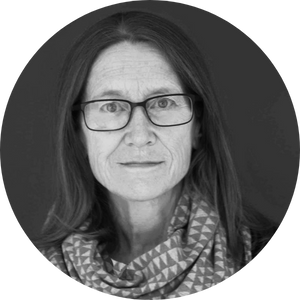
Speaker:
Sandra McKee, FAIA,
Owner,
Yoshihara McKee Architect
Bio
SESSION DESCRIPTION
This session explores how architects—particularly those in small firms—can elevate their design skills and expand their professional presence through meaningful engagement with civic and cultural initiatives. By integrating community involvement into practice, small firms can diversify their portfolios, strengthen their networks, and build visibility in authentic, non-commercial ways. Drawing from a variety of real-world examples, this session demonstrates how strategic participation in public life can open doors to new design opportunities and reinforce a firm’s identity.
▼ Learning Objectives
- Identify effective strategies for small architecture firms to engage with community organizations, civic groups, and cultural initiatives as a means of expanding professional presence and practice.
- Evaluate how participation in non-commercial, public-facing activities—such as teaching, volunteering, and creative exhibitions—can enhance firm visibility and support long-term business development.
- Analyze the impact of developing a design specialty (e.g., origami-inspired architecture) on strengthening a firm’s identity, broadening project types, and fostering innovation.
- Demonstrate how involvement at multiple scales of community and design—from neighborhood initiatives to academic and cultural programs—can improve design outcomes and diversify a firm’s portfolio.
1:30 PM – 2:30 PM: Keeping the Micro-Businesses and Solopreneurs Relevant and Resilient | 1.0 LU
SESSION DESCRIPTION
Our goal is to look at small businesses laterally, as collaborators and not competitors. Small business owners are looking for professional connection and support. This network can improve our capacity to manage these issues after a major world-wide disruption and we believe that continuing to expand it to include other similar firm owners across the country will contribute to the stability we are all seeking and help us address the impacts of the pandemic.
▼ Learning Objectives
- Identify post-pandemic business practices that help micro-businesses and sole practitioners amplify their professional voice and maintain relevance in a changing industry.
- Evaluate strategies for sustainable firm growth, including administrative efficiency, client management, and the decision-making processes that shape long-term business models.
- Leverage national peer networks to exchange resources, share business solutions, and access collective knowledge that supports small firm resilience.
- Apply criteria to assess which clients, collaborators, and project types align with their firm’s values, strengths, and long-term professional goals.
11:30 AM – 1:00 PM: AI Labs & Panel: Practical Tools for Small-Firm Architects | Submitted for Approval
SESSION DESCRIPTION
This 90‑minute interactive workshop trains architects to responsibly use AI tools to enhance life‑safety and code compliance, clarify construction documentation, streamline stakeholder communications, and translate technical environmental concepts into actionable design guidance. The program includes a moderated panel of small‑firm practitioners, hands‑on labs, and a dedicated ethics module. Participants actively generate and critique AI outputs directly tied to Health, Safety, and Welfare. Artifacts (AI outputs and brief reflections) will be collected to document active learning.
▼ Learning Objectives
- Generate AI-assisted code compliance checklists and zoning summaries to identify and mitigate life-safety risks—including egress sizing, fire separation continuity, occupancy classifications, and accessibility triggers—and explain how each output must be reviewed and validated by a licensed design professional to ensure public safety.
- Use AI to draft and refine construction drawing annotations and specification language that clearly communicate performance and life-safety requirements, reducing ambiguity that can lead to field misinterpretations, improper installation of rated assemblies, moisture intrusion, or ventilation failures that negatively impact occupant safety and welfare.
- Apply AI tools to support coordination with permitting authorities, consultants, and contractors in ways that reduce delays and sequencing conflicts that may compromise jobsite and occupancy safety, including generating concise scope narratives, phasing summaries, and risk-aware decision logs that support safe construction and compliant occupancy.
- Translate complex environmental performance and building science concepts—such as hygrothermal behavior, indoor air quality risk, ventilation balancing, or overheating mitigation—into clear design options using AI, allowing design teams to make informed decisions that maintain occupant health, comfort, and long-term building durability.
- Implement ethical oversight and disclosure practices for AI use within architectural deliverables, including bias evaluation, documentation of human review, and professional responsible control, in order to uphold the architect’s duty to protect the public and maintain trust in health-, safety-, and welfare-critical design decisions.

Speaker:
Brian W. Penschow, AIA,
Principal Architect,
BWP Architecture Firm
Bio
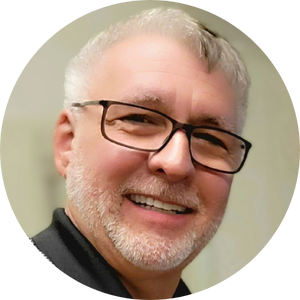
Speaker:
William J. Martin, AIA,
Principal Architect,
WJM Architect
Bio
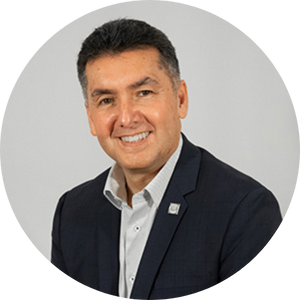
Speaker:
Willy Zambrano, FAIA,
Design Principal In Charge & Founder,
Zambrano Architectural Design LLC
Bio
1:15 PM – 2:15 PM Keynote: Practice Not Perfect: Design Process of a Small Firm Practitioner | 1.0 LU

Speaker:
Gerard Damiani, AIA,
Founder & President,
d’ARC Architects, P.C.
Bio
SESSION DESCRIPTION
Gain insight into the benefits and challenges of running a deliberately small architectural practice; how direct drawing and detailing by the principal shapes design outcomes; approaches to cultivating close collaboration with clients, contractors, and fabricators; methods for selecting materials and construction techniques with a focus on longevity, appropriateness, and craft; the role of “selective isolation” in resisting trends and developing a contextually grounded architectural language; and, how small practices can influence broader architectural culture through depth, experimentation, and continuity.
▼ Learning Objectives
- Identify strategies for cultivating mentorship, continuous learning, and professional authenticity within the unique opportunities and limitations of small firm practice.
- Analyze how cultural, environmental, and historical aspects of place can meaningfully shape the design process and outcomes in a context-driven architectural practice.
- Explore how traditional materials can be transformed into expressive architectural elements through thoughtful application of craft, contextual awareness, and design intention.
- Evaluate the role of close collaboration—with clients, contractors, and fabricators—in sustaining craft-based, context-responsive architectural work in small practices.



